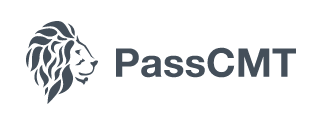In addition to the great networking opportunities, the amount of information you can take with you is enormous. At that time I passed all levels of the CMT exam, passed level II and participated in the annual CMT symposium.
This article will be divided into two parts, one explaining and answering the questions that led to this article, and the other summarizing my actual experience with the program. Although I will not offer personal advice, I will discuss my experience and the main benefits of concluding the process. I received my official designation in the post a year ago and it has been quite a journey since then.
The CMT Association is a nonprofit, global professional organization of technical analysts based in New York City. It is the global reference body that oversees, organises and develops CMT programmes.
The Chartered Market Technicians Program is a series of exams designed to demonstrate expertise in technical analysis. The curriculum is designed to promote candidates “expertise in the field of technical analysis. The CMT-level exams test candidates “understanding of the basic tools of a technical analyst.
Candidates who pass the programs at three levels and are a full member of the CMT Association acquire the Certification Chartered Market Technician (CMT) designation and are certified as persons competent for use in technical analysis.
In February 2005, the. Securities and Exchange Commission recognized Stages 1 and 2 of the Chartered Market Technician Program as an alternative to the Series 86 review as part of a rule change filed by NYSE with the Financial Industry Regulatory Authority (FINRA).
Candidates must pass all three exam levels to qualify as a Chartered Market Technician (CMT) (r), complete the membership and application process and agree to the Code of Ethics of CMT Associations. To register for the CTM program, individuals must join the association as an associate member and register for the CMCT program. When registering for the program, candidates pay for registration for their first exam.
After passing the exam, the CMT Association requires three reference sponsors who hold a CMT certificate to test your skills, knowledge and technical analysis skills. During this phase, you will have these references and other members of the association read your original research, examinations and essays to support your application for the association and the subsequent approval of your CMT certificate.
If you want to boost your confidence before you get certified by the CMT Association, working with a private tutor or CMT course can help. After becoming a CMT member with an annual fee of $325, you will work in a professional analysis or investment management role for at least three years, and you should continue in that role until you have passed the CMT exam.
T Level 1 and CMT Level 2 are multiple choice tests, while CMT Level 3 is an essay form. Trying to gain knowledge in all three stages of CMT certification can seem like a daunting task.
The Chartered Market Technician program (CMT) shows that you can be a professional in technical analysis. For those looking for a traditional job as a Wall Street analyst, passing the first two CMT exams is a significant step toward becoming a Registered Research Analyst (FINRA). The CMT programme offers a structured approach to technical analysis, ensuring that all key areas are covered.
The CMT (Charter Market Technician (r) Association) is the worldwide professional certification body for the CMT program with presence in 137 different countries, over 35,000 apprentices, over 5,000 full members and charter owners, and over 10,000 candidates enrolled. The CMT Association offers you a platform to participate in the exams and become a financial FRM. When you think about signing up for the Chartered Market Technician Program and seeing your partner name on a card or acronym, you may be wondering what value the Chartering Market Technician designation has.
Materials covered in a CMT program include a variety of statistical and technical analyses of price patterns, volume, history, trend measurements, dynamics and volatility. They also offer a complete exam preparation program as well as individual courses, so that you can schedule a little too much study time if necessary. For example, the program is divided into 12 modules covering theory and history, technical analysis, charts, trading systems and ethics, to name a few.
These three steps form the basis for integrating technical analysis tools into your current practice, and CMT testing is computerized and conducted by prometric test centers around the world. To solve all three levels, you need enormous experience and a grip on the field, but it will be easy for you to pass. Prepare to take the exam in English, as this will require considerable preparation, especially if you are dealing with Level III essays.
The CMT exam for the one level costs $450 to $750 and CMT members pay $475 to $875. The CMT exams for level two cost $650 to $1,050 (depending on whether you apply as a CMT member or outside the association) and all other members of the association pay $475-875. The price for the CMT exam level three is the same as the first two, but you have to pay for the study materials for the exam which range from $225 for the Level e-book format (print) to $275 for it.
The Chartered Financial Analyst Institute ( CFA ) offers the CFA Charter, the internationally recognised gold standard in financial analysis and investment management. CFA Charters “Rigid Certification Program adds value by helping financial professionals develop expertise in several key areas of finance including financial analysis, equity research and financial modeling.
